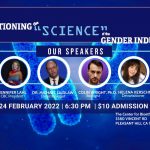Calum serves as Director of Research of the Scottish Council on Human Bioethics in Edinburgh.
Crossing the species barrier is a procedure that has always fascinated humanity. In antiquity, for example, centaurs (human-horse hybrids), fauns (human-goat hybrids) and minotaurs (human-bull hybrids) were all accepted as being special and endowed with specific powers. And although they were not considered as being part of the human race, they were neither seen as being entirely animal. Indeed, their distinct and solitary status in mythology sometimes resulted in them being rejected as different and portrayed as lonely monsters. This happened, for example, in the myth relating to the minotaur which was eventually destroyed by Theseus.
But crossing the species barrier is no longer in the domain of mythology and new procedures have recently been developed by scientists which mix human and animals biological elements and thus question the very concept of being entirely human.
For example, xenotransplantation (the transplantation of cells, tissues and organs from animals to humans) is currently being considered in medicine in addition to transgenesis whereby animals are created in which some foreign (human or non-human) genes are deliberately inserted into their genetic make-up. But, by far the most controversial procedures enabling the crossing of the species barrier is certainly the creation of embryological and foetal animal-human hybrids. In these cases, eggs and sperm in addition to embryological stem cells are used to create new hybrids.
To many people, the resulting animal-human entities created would give rise to grave and complex ethical concerns. The definition of ‘being human’ would no longer be clear cut. And this has given rise to concerns by bodies such as the Pontifical Academy for Life which indicated that the introduction of foreign animal parts into a human body may modify a person’s intrinsic identity and the rich meaning of being human2. In this respect it also suggested that the implantation of foreign parts into a human body would only be acceptable in relation to the degree of change that it may entail in the human identity of the person who received them3. Not all parts of the human body are generally considered to be equally important in the expression of personal identity. For example, some body parts exclusively perform their specific purpose such as the heart which functions as a biological pump. Others, on the other hand, add to their functionality a strong and personal symbolic element which inevitably depends on the subjectivity of the individual. And others still, such as the brain and reproductive cells, are often considered to be intrinsically linked with the identity of a person. Thus, the Pontifical Academy for Life has indicated that the transfer of animal brain and reproductive cells to human persons should not be considered as acceptable because of the risks connected with such a procedure with respect to human identity. However, it does suggest that those animal parts which are seen as being purely functional could be transferred into a human person, on a case by case basis, and depending on the specific relation to the symbolic meaning which they take on for each person4.
In March 2004, the President’s Council on Bioethics of the USA also indicated5that, though the crossing of the human-animal boundary was a sensitive question, the mixing of human and animal materials was not by itself objectionable.In other words, in the context of therapy and preventive medicine, the President’s Council accepted that the transplantation of animal parts to replace defective human ones could be considered as ethical. In addition, it had no overriding objection to the insertion of animal-derived genes or cells into a human body – or even into human foetuses – where the aim would be to address a serious disease in the patient or the developing child. But in the context of procreation – of actually mixing human and non-human gametes or embryonic cells at the very earliest stages of biological development – the Council indicated that the ethical concerns raised by violating that boundary were especially acute. In this respect, the President’s advisors recommended that one bright line should be drawn at the creation of animal-human hybrid embryos, produced by the fertilisation of human eggs by animal (for example, chimpanzee) sperm (or the reverse). This is because the Council accepted that society should not be put into a position to judge the humanity or moral worth of such ambiguous hybrid entities (for example, a “humanzee,” the analogue of the mule).
But in the UK, there is already a need to consider these issues. Indeed, the mixing of human sperm with the eggs of hamsters to form two cell embryo “humster” hybrids is already a standard fertility test measuring the quality of human sperm. And hardly anything has been written about the moral status of these embryos! Many people believe that these entities should never be created but does this mean that they should automatically be destroyed if they are brought into existence? In UK law, these human-hamster research embryos must be destroyed at the two-cell stage (one day after fertilisation). This contrasts with the 14 day post-fertilisation period in which entirely human research embryos must be destroyed. But why does such a time difference exist in the Human Fertilisation and Embryology Act (1990)? Does this reflect a greater unease concerning the very existence of these human-animal embryos? If so, why consider the experiments in the first place? A lot more bioethical thought and rational reflection is urgently required in this important area which relates to the very essence of being human.
1 Note: This article was published in the 2004 Summer edition of the Centre for Bioethics and Public Policy’s Commentary in the UK and reproduced with permission.
2Prospects for Xenotransplantation – Scientific Aspects and Ethical Considerations (September 26, 2001), Pontifical Academy for Life, http://www.vatican.va/roman_curia/pontifical_academies/acdlife/documents/rc_pa_acdlife_doc_20010926_xenotrapianti_en.html
3Prospects for Xenotransplantation – Scientific Aspects and Ethical Considerations (September 26, 2001), Pontifical Academy for Life, http://www.vatican.va/roman_curia/pontifical_academies/acdlife/documents/rc_pa_acdlife_doc_20010926_xenotrapianti_en.html
4 Prospects for Xenotransplantation – Scientific Aspects and Ethical Considerations (September 26, 2001), Pontifical Academy for Life, http://www.vatican.va/roman_curia/pontifical_academies/acdlife/documents/rc_pa_acdlife_doc_20010926_xenotrapianti_en.html
5The President’s Council on Bioethics – Reproduction and Responsibility:The Regulation of New Biotechnologies -Washington, D.C., March 2004, http://bioethics.gov/reports/reproductionandresponsibility/chapter10.html
Author Profile
Latest entries
 Sperm DonationMarch 15, 2022Venus Rising with Edward Saulig: Reflections of a Sperm Donor
Sperm DonationMarch 15, 2022Venus Rising with Edward Saulig: Reflections of a Sperm Donor BioethicsMarch 13, 2022Dr. C. Ben Mitchell: 2022 Ramsey Award Winner
BioethicsMarch 13, 2022Dr. C. Ben Mitchell: 2022 Ramsey Award Winner #BigFertilityMarch 10, 2022Documentary Explores One Woman’s Journey through Egg Donation
#BigFertilityMarch 10, 2022Documentary Explores One Woman’s Journey through Egg Donation BioethicsMarch 9, 2022Questioning the “Science” of the Gender Industry
BioethicsMarch 9, 2022Questioning the “Science” of the Gender Industry

